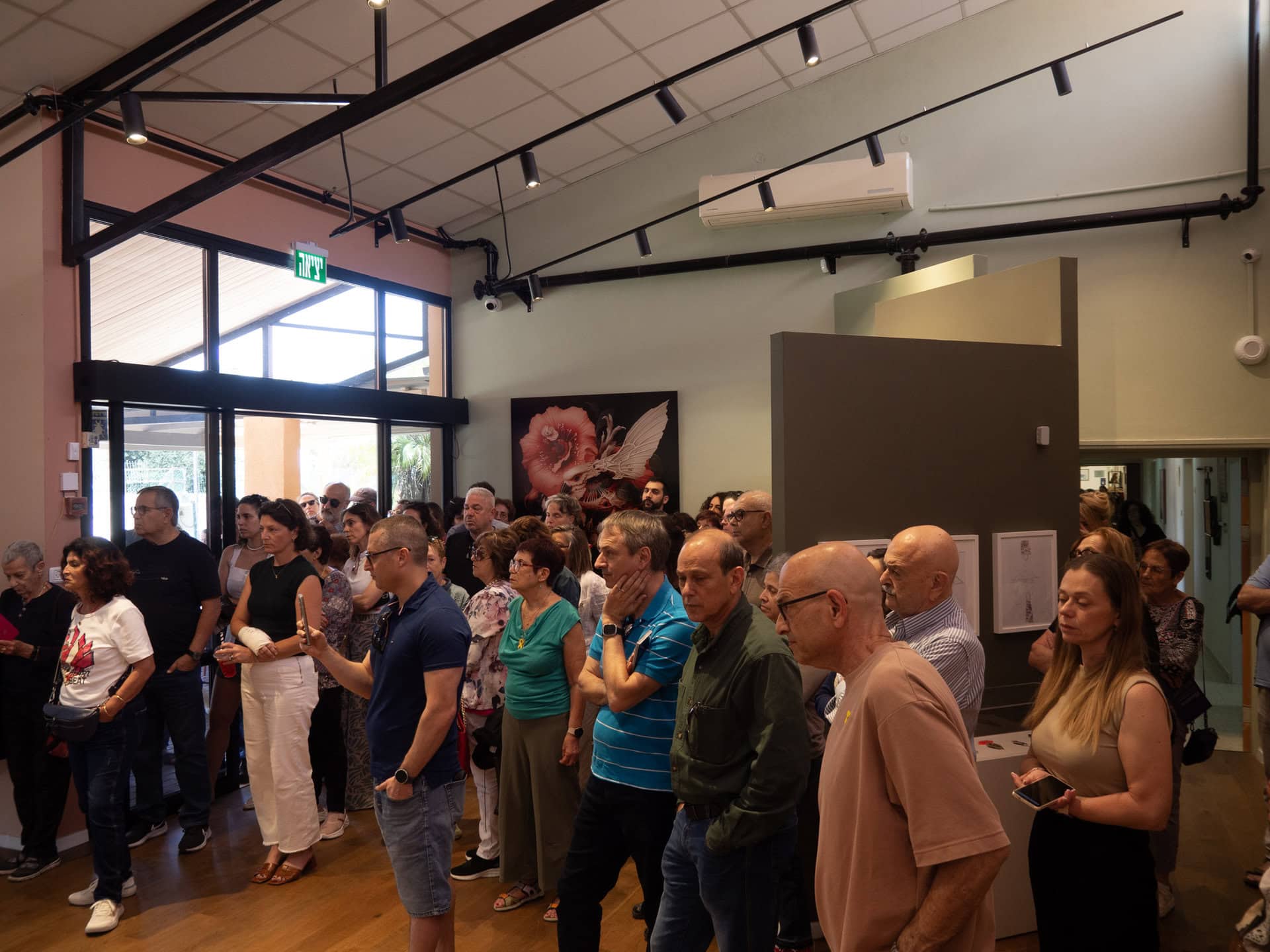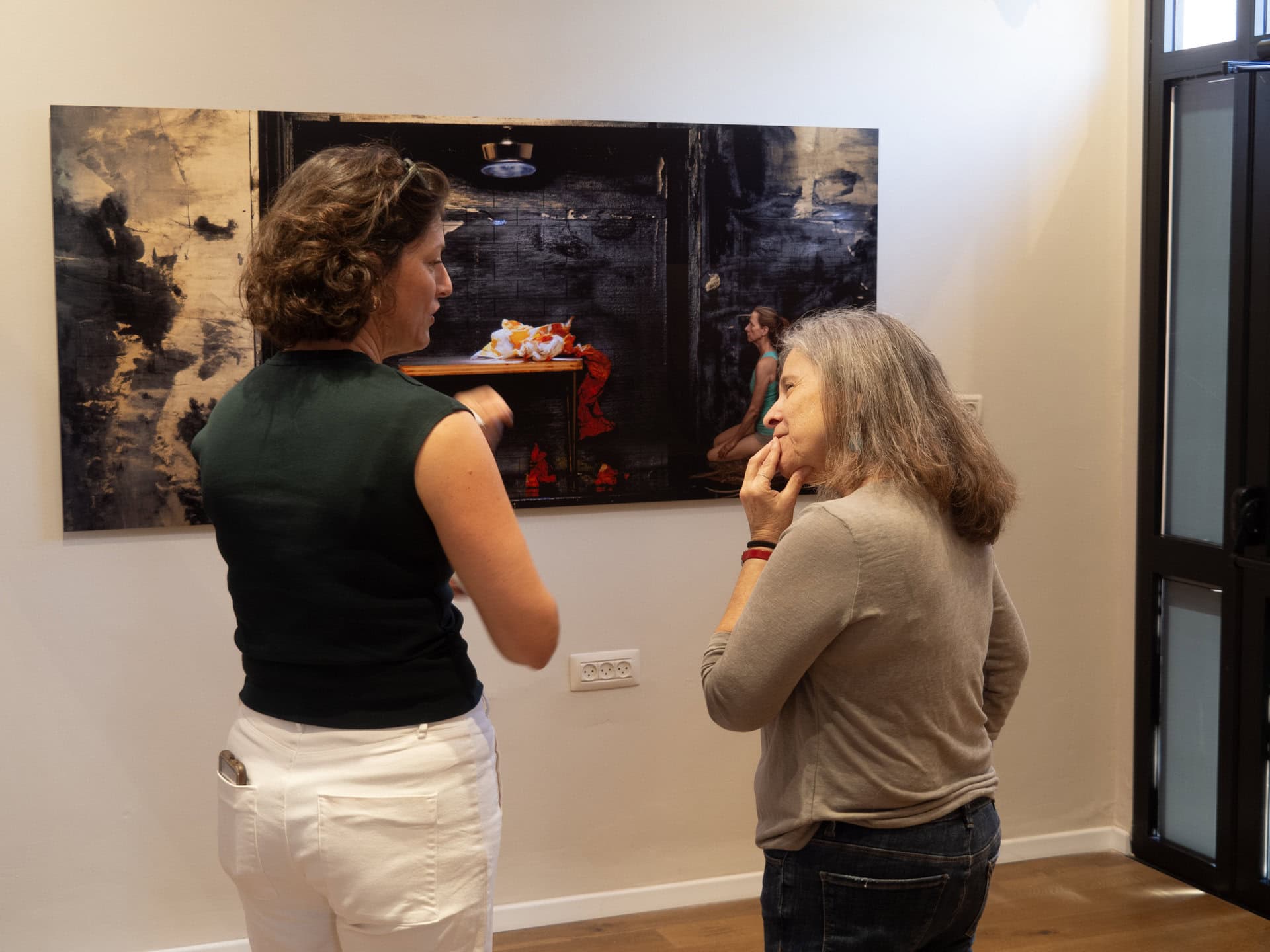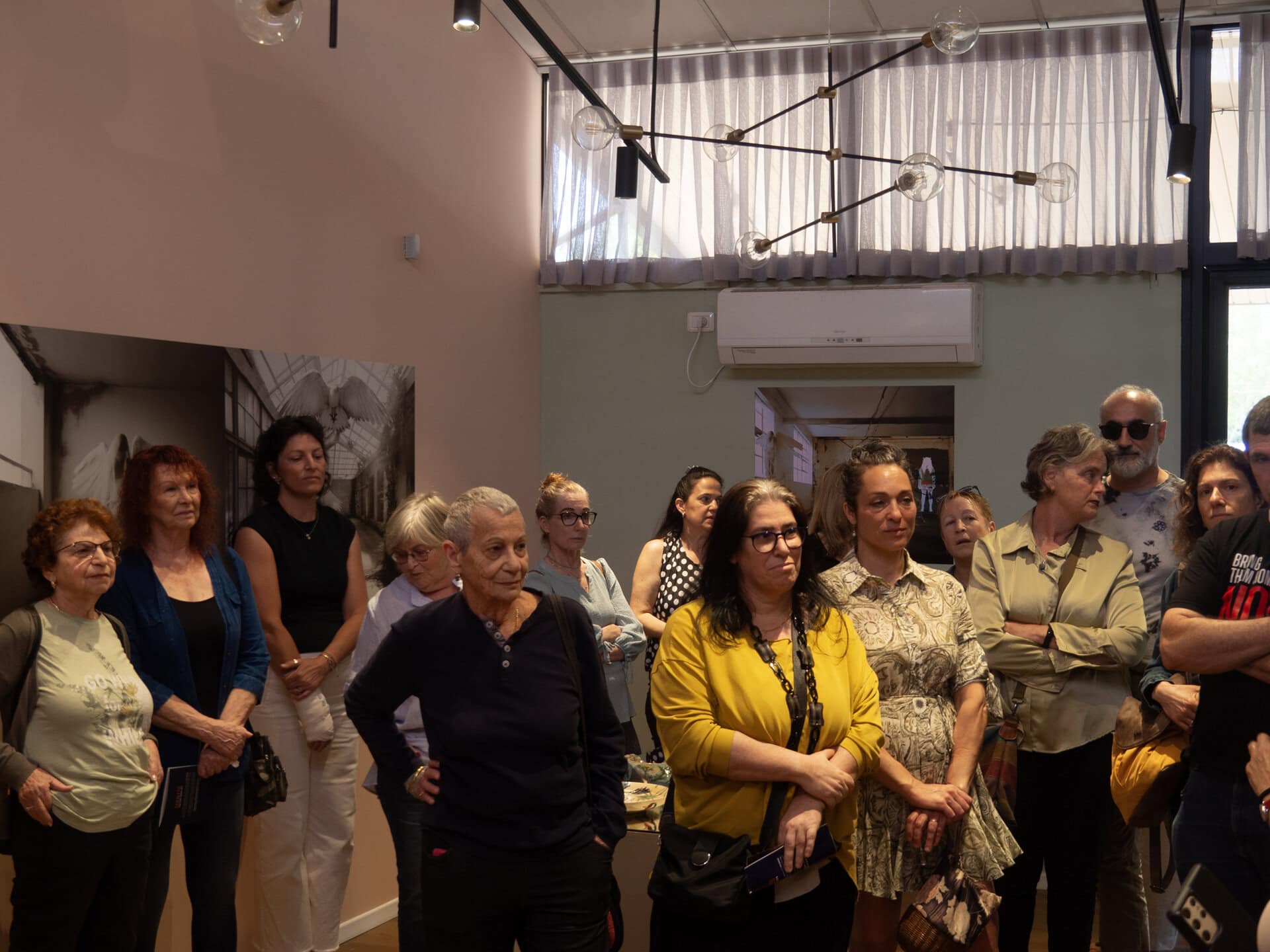october 7th her story exhibition

October 7th Herstory
Group Exhibition
Curator: Osnat Israely
Ass. Curator: Ofra Eitan
Anat Grozovski -Aboucaya
Orly Landwer Tralovsky
Gila Myers
Anat Ein-Dor
Limor Zarfati Max
Alicia Shahaf
Merav Shin-Ben Alon
The exhibition was presented at Eden 51 in Kibbutz Dorot
between the dates 20.4.24- 6.11.24
Throughout history, women have been underrepresented in many aspects of documented history, especially in times of war. Women's voices, perspectives, and achievements have often been neglected or omitted from historical records, including written documents and art. Their exceptional performance in the current war has proven that women have a most significant contribution to make, both on the front lines and in the rear.
The philosopher Simone de Beauvoir wrote, "One is not born, but rather becomes, a woman. There is no biological, psychological, or economic destiny that determines a woman's identity in society." Women's identity, like any identity, does not exist independently or essentially; it is a product of social conventions and construction. Alongside the movement for change in all that relates to the perception of gender roles, this war has proven to us once again that in a world without equality, women are the first to be affected.
On October 7th, women's bodies became a battlefield with catastrophic results. The fear of being raped, which is embedded in the collective unconscious of women everywhere, was awakened with renewed intensity in many women who witnessed the massacre. Others felt that they had no way out and were unable to protect themselves from the disaster.
Eden Association, operating in the "Otef Aza" region since 1997 and specializing in trauma treatment for girls and women, has taken on the task of giving voice to the stories and strength of women in the exhibition "October 7th Herstory".
Professor Judith Herman writes, "Art is an expression of the human soul, and it has the power to heal and liberate." Creating a narrative in the face of trauma allows one not to retreat from life in the face of terror.
The exhibition "October 7th Herstory" takes us on a journey into the world of women artists, responding to the October 7th war, giving voice to trauma and healing, hope and resurrection.
Anat Grozovski–Aboucaya – "RECHAMIM" (Wombs). Anat depicts the female body trapped inside a jar, inside a womb, inside itself, an expression of the urge to return to the womb in order to find ultimate protection. The jar as a container or womb carrying a fetus has existed in the history of art alongside its additional role as a burial jar. We see it on the one hand as a symbol of life and fertility, and the same symbol also expresses a message of the ashes of death.
Orly Landwer Tarlovsky – "Fields". In four ceramic bowls, Orly expresses the anxiety and trauma she experienced during the war, as a mother, a soldier's wife, and a woman disconnected from her home in Sha'ar HaNegev. The "Longing" bowl expresses her yearning for fields as a place of healing. The "Absolute Moment" bowl depicts an escape and separation from life, and expressing absolute love. The "Broken Vessel" bowl depicts intimate family moments in the kibbutz that were cruelly cut short. The "Hope" bowl depicts a moment of ecstatic release into freedom of a Goldfinch, and hope for a better future.
Gila Myers – "The Transparent Ones", "Community". Gila brings everyday figures whose identity is difficult to define. The figures express pain and loneliness. Gila says that this is her way of touching the painful places in people. The transparent figures represent all the people whose pain is invisible.
Anat Ein-Dor – "KETEM" (Stain). In the series of works, Anat brings images of charred faces, sealed spaces, cracks in walls, gaps in the ground, body bags and face coverings. Anat expresses empathy with the feeling of suffocation, torture, helplessness of the victims and hostages, and at the same time, order that will structure the chaotic feeling.
Limor Zarfaty Max – "Without Words". Limor says that following the war she created works that speak of the destruction and desecration of the female body. "I wanted to express the terror and fear I felt when I heard the horror stories, especially towards women and children." The works express the contrast between the cruelty of the terrorists and the innocence of the children and the victims.
Alicia Shahaf – In the series "I Know the Song of the Angels Wearing Ashes", the image of the phoenix appears. The legend tells that the phoenix lives in the desert for hundreds of years. Towards its death, the phoenix prepares a nest of cinnamon branches and burns itself. From the ashes of the burnt phoenix, a new phoenix emerges after a long time. The phoenix symbolizes the cycle of trauma and healing, disaster and resurrection.
Merav Shinn Ben-Alon – "Abstraction". In Hebrew, the word "abstract" has a double meaning. It refers not only to abstract painting but also to the violent act of stripping one of her cloths. This is an attempt to take the works to a place that moves away from the context of abstract painting and connect it to the experience of the female body, the movement, and traces of the body. According to Merav, the collective traumatic event made the works understandable, painful and healing.










